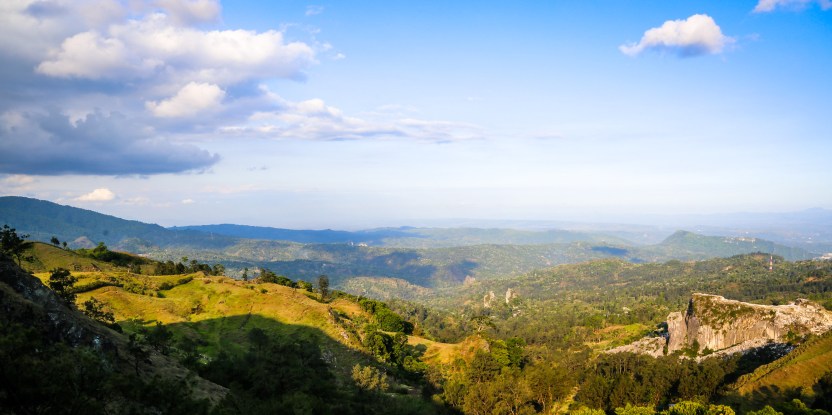
Many parts of Southeast Asia have endured a “hazy start to the year”, with hundreds of school closures due to high levels of health-compromising fine particles in the air. This comes on the heels of a new State of Global Air report, which found that air pollution is the leading environmental risk factor for poor health in the region. Health impacts aside, haze in the region—much of which is caused by forest and land fires, including on carbon-rich peatlands—is a significant contributor to climate change.
Held in Jakarta, Indonesia, on November 26, 2024, the event brought together academics, programme representatives, NGOs and local stakeholders to explore how to enhance cross-sectoral collaboration and mobilize resources for peatland-related haze issues.
In his opening remarks, Vong Sok—head of the environment division and assistant director of sustainable development at the ASEAN Secretariat—urged an inclusive and collaborative approach. “Coordinated effort among ASEAN member states to mobilize resources efficiently is a must,” Sok said, “and achieving sustainable land management requires a multi-faceted approach, involving government, private sector actors, civil society and local communities.”
Sok highlighted the challenges of harmonising priorities across the ASEAN member states between the national subnational levels and among diverse stakeholders. “Each government prioritizes resources differently and private sector objectives often diverge from those of local communities,” Sok said. “Peatland ecosystems also vary, demanding tailored approaches.” Effective collaboration, he said, requires balancing these dynamics to achieve cohesive outcomes.
Sok also urged participants to orient their discussions towards the opportunities presented by the current challenging context. “At [UNFCCC] COP29, we learned about the wealth of commitments and funding available for member parties to advance climate actions,” Sok said. “This presents an opportunity, because haze and sustainable land management are intricately linked and addressing them appropriately will contribute significantly to climate change mitigation.”
Swetha Peteru, a scientist and MAHFSA lead at the Center for International Forestry Research and World Agroforestry (CIFOR-ICRAF), emphasized the need for greater private sector engagement. “Public financing often remains stagnant. To bridge the gap, we must enhance private financial contributions,” Peteru said.
Peteru presented an analysis of financial flows in biodiversity protection and sustainable land management, which showed that an initial investment of USD 1.5 billion is needed by 2030 to mitigate haze in Southeast Asia and that an appropriate enabling environment is critical to achieve this goal. She highlighted the current dominance of funding from public sources: these account for 75.9% of financing for biodiversity conservation, while private contributions stand at just 11.7%, primarily through offsets and credits. Similarly, public financing dominates sustainable agriculture, forestry and fishing, at 41.4%, with private sector contributions at just 8.6%—largely focused on sustainable supply chains.
Azalea Ayuningtyas, co-founder and CEO of Du Anyam and Krealogi, emphasized the importance of local economic initiatives in haze mitigation. Her organization collaborates with communities in Kalimantan and East Nusa Tenggara to produce nature-based goods from purun [Lepironia articulata], a plant native to peatlands. “Ensuring market access for [community members that would like to sell] these products is key,” Ayuningtyas said. “Through economic activities, communities are incentivised to preserve peatlands as valuable resources.”
Bradford Sanders, head of operations at Riau Ecosystem Restoration, highlighted the role of private institutions in haze-free efforts and shared experiences of stabilizing peatlands through collaborative management with local communities. “Peatlands are at the heart of the transboundary haze issue. Their restoration is critical to reducing haze and pollution,” Sanders said.
CIFOR-ICRAF principal scientist Daniel Murdiyarso urged participants in his closing remarks to learn from past haze and peatland fire events and the wealth of research and reporting that already exists on them, “so we do not waste our time and resources doing the same thing.”
He also emphasized that whilst nature-based solutions cannot undo the impacts of burning fossil fuels, they can support broader goals of sustainable land-use. “Let’s look at nature as our partner in this juncture of business and development, helping local communities to be part of the solution,” Murdiyarso said. “Because if our peatlands and forests are maintained well and used wisely, they can be part of the solution.”
The dialogue concluded with a commitment to ongoing collaboration to implement the nine strategies outlined in the Second Roadmap. These strategies aim to guide policy, funding and partnerships, ensuring sustainable and impactful haze mitigation efforts across Southeast Asia.